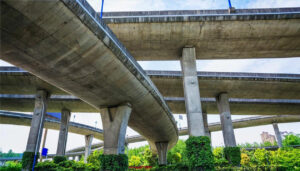At the outset, President Ferdinand Marcos, Jr. made it clear that infrastructure was going to be a priority of his administration. Given its multiplier effects on employment, income generation, delivery of basic services, and many others, infrastructure will power the growth of our economy, for the good of all.
The Build Better More flagship program targets infrastructure investment of 5% to 6% of GDP, to be done through the evaluation, approval, and rollout of 186 infrastructure flagship projects with a combined value of P9.6 trillion, or approximately $163 billion. Infrastructure is indeed a pillar of economic growth. This is also expressed in the Philippine Development Plan 2023-2028 (PDP).
“This government will continue to invest in job-generating infrastructure, social protection programs, health and education for all Filipinos. We will not rest on our laurels but use them to propel us forward into social and economic transformation,” the President said in a video statement uploaded on the Presidential Communications Office’s official Facebook page in August.
In itself, however, infrastructure is a broad word that encompasses a wide range of sectors. Thus, there is need to further qualify and define what kinds of infrastructure are needed in different areas of the Philippines, and how such big-ticket projects will be accomplished in order to attain their ultimate objective. For example, the PDP identifies infrastructure connectivity, limited water resources and accessibility, and high electricity prices as major challenges to the attainment of our country’s economic goals.
To address these challenges, it is good to acknowledge that the government cannot accomplish its goals on its own.
The private sector plays an essential and indispensable role in nation-building. Collaboration between the public and private sector fosters mutual trust through shared objectives. Risks are spread and mitigated, and collective benefits are realized. After all, the public and private sectors, with their complementary roles, are seen as two halves of the same whole, working together to facilitate growth and sustainable development.
The public–private partnership (PPP)-powered infrastructure opportunities are not limited to the National Capital Region, either. There remains vast room in an archipelago such as the Philippines to become infrastructure hubs. The central Visayas is one such place. This early, there have been several success stories in terms of PPPs in these crucial sectors, with infrastructure investments proving key.
One such example is the partnership with Acciona, a Spanish infrastructure company that entered our country in 2016 and which recently solidified its commitment by moving its regional headquarters from Singapore to the Philippines.
Acciona’s presence in the Philippines addresses the multiple challenges of infrastructure connectivity, renewable energy, and water resources. It is a prominent force behind the Cebu-Cordova Link Expressway (CCLEX). It has partnered with the Cebu government to develop a $130-million solar project in Daanbantayan to meet Cebu’s electricity demands and enhance the region’s energy security. In the South of Manila, Acciona with its partners have been awarded the contract to design and construct the East Bay 2 drinking water treatment plant (DWTP) in Pakil. Drawing water from Laguna de Bay, the largest lake in the Philippines, the plant aims to provide clean and healthy drinking water to two million people. Acciona’s facilities focus on advanced treatment of untreated raw water, addressing the significant lack of access to clean water among many households in the country despite abundant resources.
During a conference hosted by the Spanish Chamber of Commerce in the Philippines and the Stratbase ADR Institute in Cebu City earlier this month, the potential and power of investments in strategic infrastructure were central to the discussions.
Ruben Camba, managing director for Infrastructure, Southeast Asia, Acciona and the president of Spanish Chamber of Commerce in the Philippines — La Cámara, emphasized the importance of friendships, trust, and a long-term view.
Ignacio Domecq, managing director for Southeast Asia, Acciona Energia, said that they were comfortable investing in the Philippines because it has rule of law. “This place is a good example,” he said. “It’s creating a very good vantage for this country to work with the others.”
Jose Maria Ortega, Water Development director for Australia and Asia, Acciona, said it is not enough to generate water; there must also be mechanisms to distribute it efficiently. “Just as we’re bringing technology, we’re also bringing the hunger to learn what the specific needs in Cebu are so that we can create projects here.”
These milestones are in no way ends by themselves. They serve to show us that genuine collaboration is possible if both parties are earnest and have the best interests of the people in mind. A combination of strategic planning and direction, financial muscle, technical expertise, integrity, and a willingness to constantly improve the investment and regulatory environment will ensure that the planned infrastructure projects will not remain plans. They will instead become realities that would make the Philippines sustainable, competitive, and able to bring a better life to its people.
Victor Andres “Dindo” C. Manhit is the president of the Stratbase ADR Institute.
